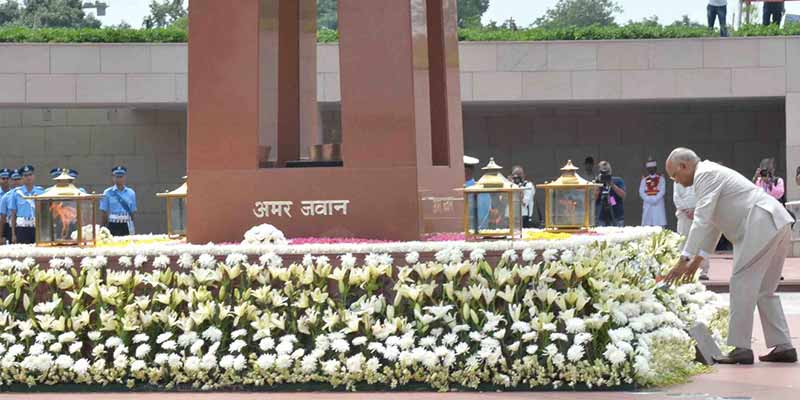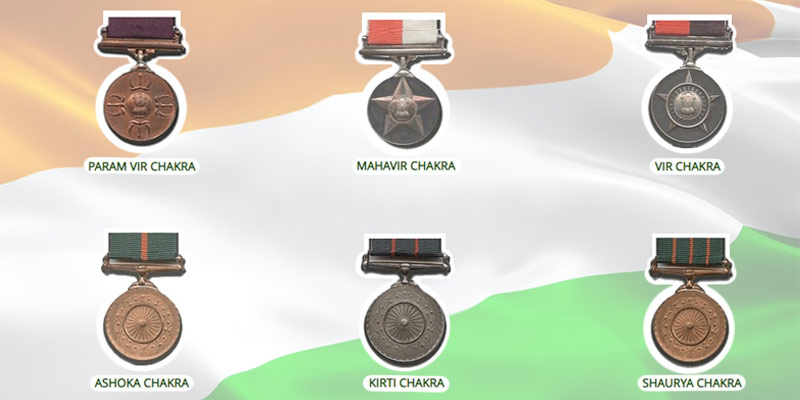- India
- Aug 16
IAF’s Abhinandan gets Vir Chakra
President Ram Nath Kovind, the supreme commander of the armed forces, approved 132 awards to armed forces personnel and members of the paramilitary forces. The awards include two Kirti Chakras, one Vir Chakra and 14 Shaurya Chakras.
Country’s largest paramilitary force, the CRPF, has bagged the maximum of 75 gallantry medals, including a Kirti Chakra and two Shaurya Chakras, for counter-terrorist operations in Jammu & Kashmir and in the anti-Naxal combat grid, on the eve of Independence Day.
Wing Commander Abhinandan Varthaman, who downed an enemy jet in an aerial combat with Pakistan in February and was held captive for three days, has been conferred the Vir Chakra, India’s third-highest war time gallantry medal.
Five IAF pilots who were part of the mission to strike a Jaish-e-Mohammad camp inside Pakistan, and Minty Agarwal, a lady officer who played a key role as flight controller during the Pakistani retaliation, were also among the military awardees.
From the Army, Sapper Prakash Jadhav of the Rashtriya Rifles will be posthumously awarded Kirti Chakra, the second highest peacetime gallantry award.
Harshpal Singh, now promoted in the second-in-command rank from Deputy Commandant, has been decorated with the Kirti Chakra for killing “three dreaded terrorists of Jaish-e-Mohammed” in September last year in Jammu.
Minty Agarwal, who played a key role as a ground staff during the dog-fight between India and Pakistan on February 27, has been awarded Yudh Seva medal. Besides Agarwal, Yudh Seva medal winners are Air Commodore Sunil Kashinath Vidhate, Group Captain Yeshpal Singh Negi, Group Captain Hemant Kumar, Group Captain Hansel Joseph Seqeira.
The IAF received a total of 13 awards including five Yudh Seva Medals and seven Vayu Sena Medal. The Army also got eight Shaurya Chakra medals. The Navy also got one Shaurya Chakra award. Of the 14 Shaurya Chakra awards, seven were conferred posthumously.
Gallantry awards in India
Post-independence, first three gallantry awards namely Param Vir Chakra, Maha Vir Chakra and Vir Chakra were instituted by the government of India on January 26, 1950 which were deemed to have effect from August 15, 1947.
Thereafter, other three gallantry awards — the Ashoka Chakra Class-I, the Ashoka Chakra Class-II and the Ashoka Chakra Class-III — were instituted on January 4, 1952, which were deemed to have effect from August 15, 1947. These awards were renamed as Ashoka Chakra, Kirti Chakra and Shaurya Chakra respectively in January, 1967.
These gallantry awards are announced twice in a year — first on the occasion of the Republic Day and then on the occasion of the Independence Day.
Param Vir Chakra: It is India’s highest military decoration awarded for displaying distinguished acts of valour during wartime whether on land, at sea or in the air.
Maha Vir Chakra: It is the second highest gallantry award for acts of conspicuous gallantry in the presence of the enemy whether on land, at sea or in the air.
Vir Chakra: It is India’s third-highest war time gallantry medal awarded for acts of bravery in the presence of the enemy, whether on land or at sea or in the air.
Ashoka Chakra: It is the highest military award during peacetime for valour, courageous action or sacrifice.
Kirti Chakra: It is awarded for conspicuous gallantry otherwise than in the face of the enemy.
Shaurya Chakra: It is awarded for gallantry otherwise than in the face of the enemy. It is third in order of precedence of peacetime gallantry awards.
Sena Medal: It is awarded for acts of exceptional devotion to duty or courage in the Army.
Nao Sena Medal: It is awarded for individual acts of exceptional devotion to duty or courage in the Navy.
Vayu Sena medal: It is awarded for individual acts of exceptional devotion to duty or courage in the Air Force.


